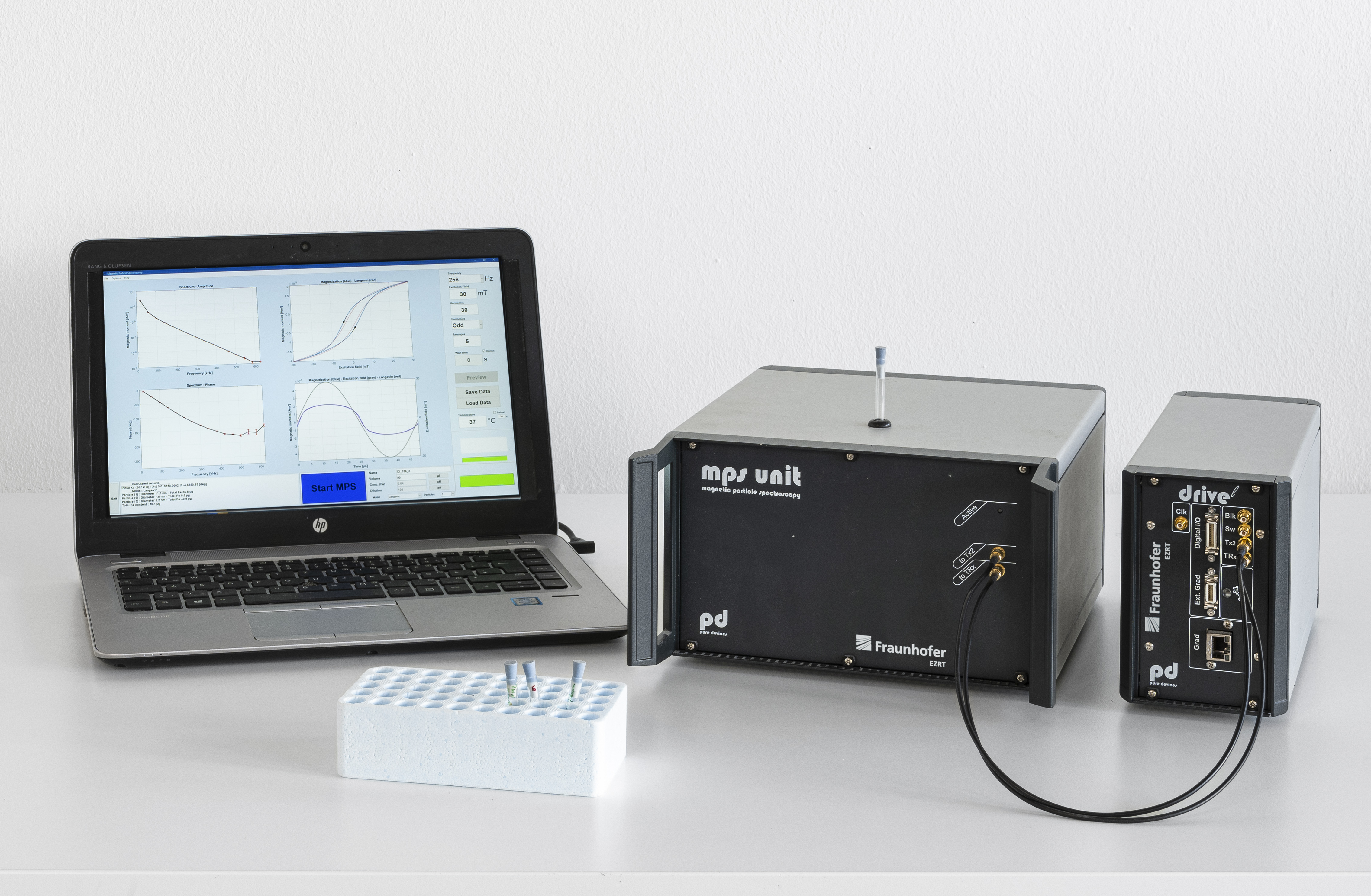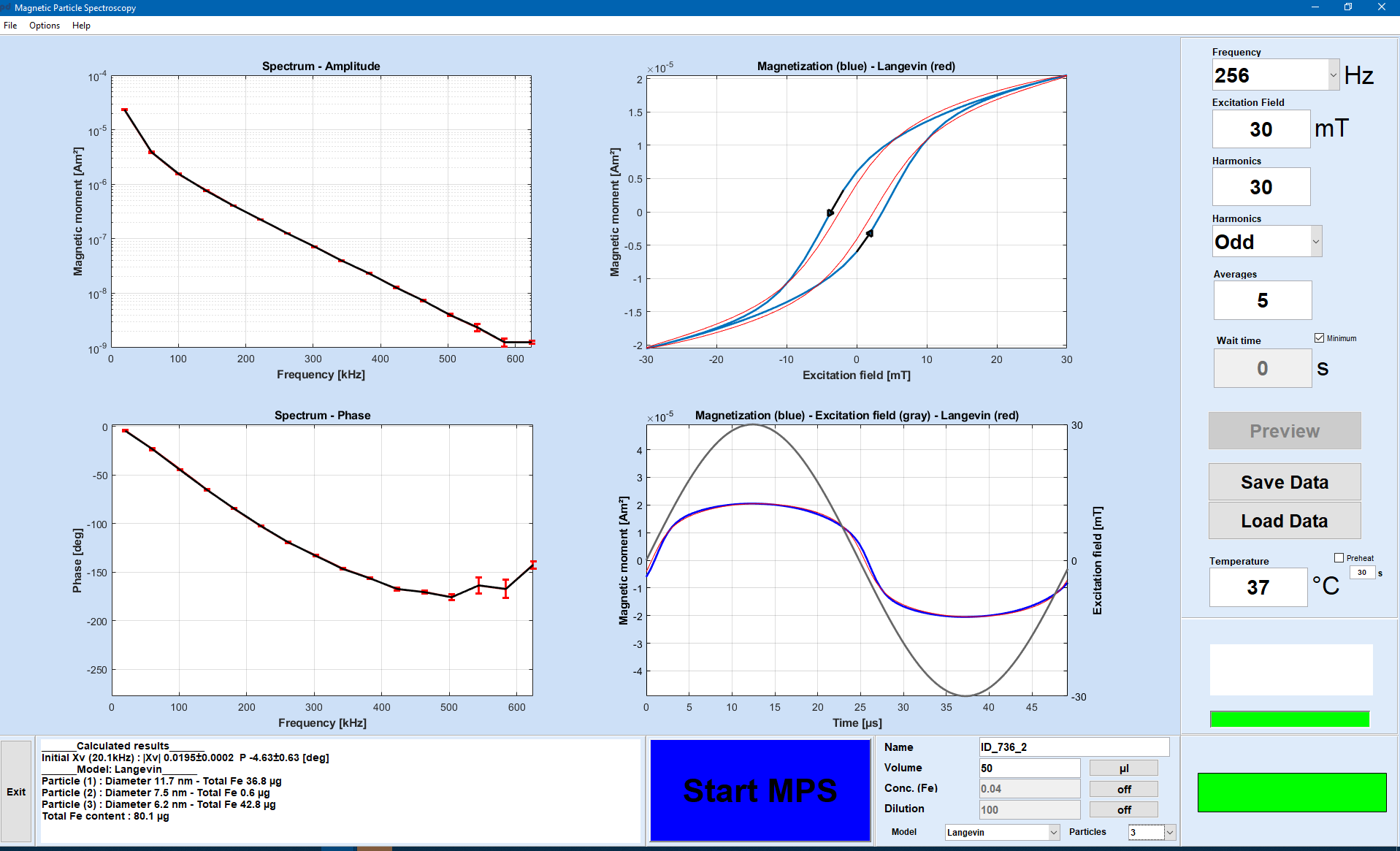The system we have developed for Magnetic Particle Spectroscopy (MPS) uses alternating magnetic fields with a frequency of typically 25 kHz and a variable magnetic field strength of up to 30 mT to excite magnetic nanoparticles. The dynamic nonlinear response of the mostly superparamagnetic particles measures their amplitude and phase spectra including higher harmonics (oscillations) with a bandwidth up to 2.5 MHz. These characteristic spectra provide information about the magnetic properties of the measured particles. For this reason, MPS is the standard method for research and development in the topics of MR contrast agents and Magnetic Particle Spectroscopy/Imaging (MPS/MPI). For the development of new magnetic nanoparticles, the instruments can also be supplied with other alternating frequencies on request.
Magnetic Particle Spectroscopy (laboratory instrument)
The sample is placed in the measurement chamber with a 6 mm glass vial. With only one push of a button the measurement is started, the rest is done by the MPS software. Due to the spectral nature of the measurement signal, the signal of the nanoparticles is measured quantitatively without background and independent of possible environmental effects. The experienced user retains full control over the important software parameters and can adjust them to his needs.
Fields of application
- MR contrast agent development
- R&D of magnetic particles
- Tracer for Magnetic Particle Spectroscopy/Imaging (MPS/MPI)
- Development of ferrofluids

